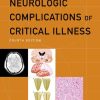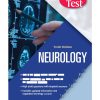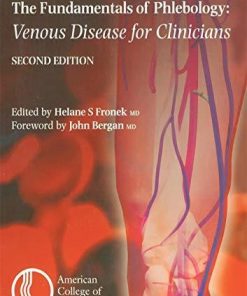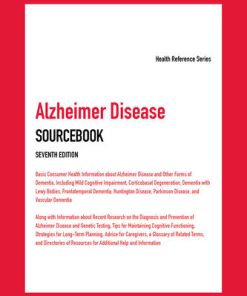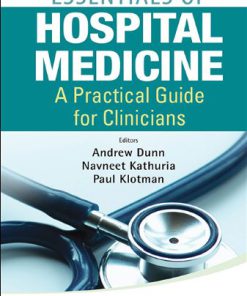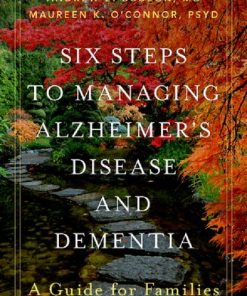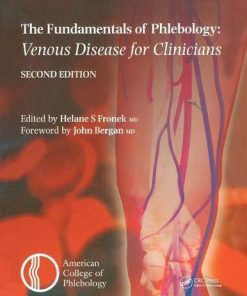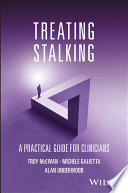(Ebook PDF) Memory Loss Alzheimer’s Disease and Dementia A Practical Guide for Clinicians 3rd Edition by Andrew Budson Md, Paul Solomon 0323795463 9780323795463 full chapters
$50.00 Original price was: $50.00.$25.00Current price is: $25.00.
Memory Loss, Alzheimer’s Disease and Dementia: A Practical Guide for Clinicians 3rd Edition by Andrew E. Budson Md, Paul R. Solomon – Ebook PDF Instant Download/DeliveryISBN: 0323795463, 9780323795463
Full download Memory Loss, Alzheimer’s Disease and Dementia: A Practical Guide for Clinicians 3rd Edition after payment.
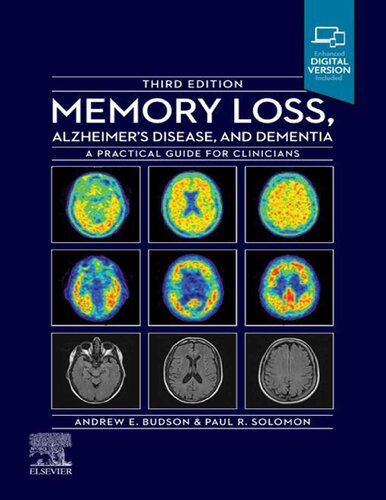
Product details:
ISBN-10 : 0323795463
ISBN-13 : 9780323795463
Author : Andrew E. Budson Md, Paul R. Solomon
With a focus on the practical, day-to-day tools needed by neurologists, psychiatrists, geriatricians, and others who work with the elderly, Memory Loss, Alzheimer’s Disease and Dementia, 3rd Edition, is an indispensable, easy-to-read resource in this growing area. Clinical experts Drs. Andrew Budson and Paul Solomon cover the essentials of physical and cognitive examinations and laboratory and imaging studies for dementia and related illnesses, giving you the guidance you need to make accurate diagnosis and treatment decisions with confidence.
Memory Loss, Alzheimer’s Disease and Dementia: A Practical Guide for Clinicians 3rd Table of contents:
Section I: Evaluating the Patient With Memory Loss or Dementia
1. Why Diagnose and Treat Memory Loss, Alzheimer’s Disease, and Dementia?
Helping the Patient
Helping the Family or Other Caregiver
Saving Money
Planning for the Future
Quality Versus Quantity
References
2. Evaluating the Patient With Memory Loss or Dementia
Talking With The Family
In the Clinic
At the Bedside
History
Review of Systems
Medical History
Allergies to Medications
Social History
Family History
Physical Examination
Cognitive Tests and Questionnaires
Screening in the Clinic
Laboratory Studies
Structural Imaging Studies
Functional Imaging Studies
Tests that Suggest Alzheimer’s Disease
Summary
References
3. Subjective Cognitive Decline, Mild Cognitive Impairment, and Dementia
A Three-Step Approach
The Spectrum of Cognitive Changes
Is Dementia Present?
Is Mild Cognitive Impairment Present?
Is Subjective Cognitive Decline Present?
Which Clinical Syndrome is Present?
What is the Underlying Pathology?
References
Section II: Differential Diagnosis of Memory Loss and Dementia
4. Alzheimer’s Disease
Prevalence, Prognosis, and Definition
Alzheimer’s Pathology
Neurochemistry
Diagnostic Criteria
Risk Factors, Pathology, and Pathophysiology
Common Signs, Symptoms, and Stages
Things to Look for in the History
Things to Look for on the Physical and Neurological Examination
Pattern of Impairment on Cognitive Tests
Laboratory Studies
Structural Imaging Studies
Molecular and Functional Imaging Studies
Differential Diagnosis
Treatments
References
5. Primary Age-Related Tauopathy
Prevalence, Pathology, Genetics, and Definition
Clinical Features, History, and Pattern of Impairment on Cognitive Tests
Things to Look for on the Physical and Neurological Examination
Laboratory Studies
Structural Imaging Studies
Functional and Molecular Imaging Studies
Differential Diagnosis
Treatments
References
6. Limbic-predominant Age-related TDP-43 Encephalopathy
Prevalence, Prognosis, and Definition
Clinical Diagnosis
Pathology, Pathophysiology, and Genetics
Common Signs, Symptoms, and Stages
Things to Look for in the History
Things to Look for on the Physical and Neurological Examination
Pattern of Impairment on Cognitive Tests
Laboratory Studies
Structural Imaging Studies
Functional and Molecular Imaging Studies
Differential Diagnosis
Treatments
References
7. Vascular Cognitive Impairment and Vascular Dementia
Prevalence, Prognosis, and Definition
Criteria
Risk Factors, Pathology, and Pathophysiology
Common Signs, Symptoms, and Stages
Things to Look for in the History
Things to Look for on the Physical and Neurological Examination
Pattern of Impairment on Cognitive Tests
Laboratory Studies
Structural Imaging Studies
Functional and Molecular Imaging Studies
Differential Diagnosis
Treatments (see also Table 7.1)
References
8. Dementia With Lewy Bodies
Prevalence, Prognosis, and Definition
Criteria and Diagnosis
Risk Factors, Pathology, and Pathophysiology
Common Signs, Symptoms, and Stages
Things to Look for in the History
Things to Look for on the Physical and Neurological Examination
Pattern of Impairment on Cognitive Tests
Laboratory, Sleep, and Electroencephalography Studies
Structural Imaging Studies
Functional Imaging Studies
Differential Diagnosis
Treatments (Table 8.2)
References
9. Primary Progressive Aphasia and Apraxia of Speech
Prevalence, Definition, and Pathology
Criteria
Common Signs, Symptoms, and Stages (Table 9.2)
Things to Look for in the History
Things to Look for on the Physical and Neurological Examination
Pattern of Impairment on Cognitive Tests
Structural and Functional Imaging Studies
Differential Diagnosis
Treatments
References
10. Behavioral Variant Frontotemporal Dementia
Prevalence, Prognosis, and Definition
Criteria
Risk Factors, Pathology, and Pathophysiology
Common Signs, Symptoms, and Stages (Video 10.1)
Things to Look for in the History
Things to Look for on the Physical and Neurological Examination
Pattern of Impairment on Cognitive Tests
Laboratory Studies
Structural and Functional Imaging Studies
Differential Diagnosis
Treatments
References
11. Posterior Cortical Atrophy
Prevalence, Definition, and Pathology
Criteria
Common Signs, Symptoms, and Stages
Things to Look for in the History
Things to Look for on the Physical and Neurological Examination
Pattern of Impairment on Cognitive Tests
Structural and Functional Imaging Studies
Differential Diagnosis
Treatments
References
12. Progressive Supranuclear Palsy
Prevalence, Prognosis, and Definition
Terminology
Criteria and Diagnosis
Risk Factors, Pathology, and Pathophysiology
Common Signs, Symptoms, and Stages
Things to Look for in The History
Things to Look for on The Physical and Neurological Examination
Pattern of Impairment on Cognitive Tests (Videos 12.6–12.8Video 12.6Video 12.7Video 12.8)
Laboratory Studies
Structural Imaging Studies
Functional Imaging Studies
Differential Diagnosis
Treatments
References
13. Corticobasal Degeneration and Corticobasal Syndrome
Prevalence, Prognosis, and Definition
Criteria
Risk Factors, Pathology, and Pathophysiology
Common Signs, Symptoms, and Stages
Things to Look for in the History
Things to Look for on the Physical and Neurological Examination (Videos 13.6 and 13.7)
Pattern of Impairment on Cognitive Tests
Laboratory Studies
Structural Imaging Studies
Functional and Molecular Imaging Studies
Differential Diagnosis
Treatments
References
14. Normal Pressure Hydrocephalus
Prevalence, Prognosis, and Definition
Criteria
Risk Factors, Pathology, and Pathophysiology
Common Signs, Symptoms, and Stages
Things to Look for in the History
Things to Look for on the Physical and Neurological Examination
Pattern of Impairment on Cognitive Tests
Structural Imaging Studies
Lumbar Puncture
Other Studies
Differential Diagnosis and Comorbid Disorders
Treatments
References
15. Chronic Traumatic Encephalopathy
Prevalence, Definition, Pathology, and Pathophysiology
Criteria
Common Signs, Symptoms, and Stages
Things to Look for in the History
Things to Look for on the Physical and Neurological Examination
Pattern of Impairment on Cognitive Tests
Structural and Functional Imaging Studies
Differential Diagnosis
Treatments
References
16. Creutzfeldt–Jakob Disease
Prevalence, Prognosis, and Definition
Criteria
Risk Factors, Pathology, and Pathophysiology
Clinical Presentation
Laboratory Studies and Electroencephalography
Structural Imaging Studies
Differential Diagnosis
Treatments
References
17. Other Disorders That Cause Memory Loss or Dementia
Depression and Anxiety
Medication Side Effects
Disrupted Sleep
Hormones?
Metabolic Disorders
Diabetes
Alcohol Abuse and Alcoholic Korsakoff’s Syndrome
Lyme Disease
Subdural and Epidural Hematomas
Vitamin B12 Deficiency
Seizures
Human Immunodeficiency Virus–associated Neurocognitive Disorder
Brain Sagging Syndrome
Hashimoto’s Encephalopathy (Steroid-Responsive Encephalopathy Associated with Autoimmune Thyroiditis)
References
Section III: Treatment of Memory Loss, Alzheimer’s Disease, and Dementia
18. Goals for the Treatment of Memory Loss, Alzheimer’s Disease, and Dementia
Talking About Treatments for Alzheimer’s Disease
Strategies to Treat the Symptoms of Alzheimer’s Disease
Treating Cognition and Treating Behavior
References
19. Cholinesterase Inhibitors
Cholinesterase Inhibitors In Alzheimer’s Disease
Should I Prescribe A Cholinesterase Inhibitor?
Is The Medication Working?
Which Cholinesterase Inhibitor Should I Prescribe?
What Is The Best Dose?
When Should the Medications be Taken?
Does it Help to Switch Medications?
How do i Discuss with the Patient Whether the Cholinesterase Inhibitor is Working?
Cholinesterase Inhibitors in Late-Stage Disease
Huperzine A
Cholinesterase Inhibitors in Other Disorders
References
20. Memantine
Mechanism of Action
Which Patients Should Take Memantine?
Efficacy of Memantine
Safety and Tolerability of Memantine
Should I Prescribe Generic Memantine or Namenda XR?
Titrating Memantine
Combining Memantine with Cholinesterase Inhibitors
Memantine in the Mild Stage of Alzheimer’s Disease
Memantine in Other Dementias
References
21. Vitamins, Herbs, Supplements, and Antiinflammatories
Vitamin D
Vitamin E
B Complex Vitamins: Folic Acid, B6, B12
Ginkgo Biloba
DHA (Fish Oil)
Antiinflammatories
Prevagen
References
22. Nonpharmacological Treatment of Memory Loss, Alzheimer’s Disease, and Dementia
Helpful Habits
External Memory Aids
Power of Pictures
Magic of Music
Mediterranean-Style Diets
Social and Cognitively Stimulating Activities
Aerobic Exercise
References
23. Future Treatments of Memory Loss, Alzheimer’s Disease, and Dementia
Strategies to Treat the Symptoms of Alzheimer’s Disease
Disease-Modifying Treatments
The Future of Alzheimer’s Disease Therapy
References
Section IV: Behavioral and Psychological Symptoms of Dementia
24. Evaluating the Behavioral and Psychological Symptoms of Dementia
What Constitutes Behavioral and Psychological Symptoms of Dementia?
The Benefits of Treating Behavioral and Psychological Symptoms of Dementia
Measuring Behavioral and Psychological Symptoms of Dementia
Evaluating Behavioral and Psychological Symptoms of Dementia: Pragmatic Guidelines for the Clinician
Formulating a Treatment Plan for Behavioral and Psychological Symptoms: Pragmatic Guidelines for the Clinician
References
25. Caring for and Educating the Caregiver
Caring for the Caregiver
Three Predictable Transition Points Where the Caregiver Needs Help
References
26. Nonpharmacological Treatment of the Behavioral and Psychological Symptoms of Dementia
Some General Principles For Treating Behavioral And Psychological Symptoms In Dementia: The 3RS
Dealing With Specific Behavioral And Psychological Symptoms Of Dementia: Behavioral Techniques
References
27. Pharmacological Treatment of the Behavioral and Psychological Symptoms of Dementia
General Principles of Pharmacotherapy for the Behavioral and Psychological Symptoms of Dementia
Pharmacotherapy for Depression
Pharmacotherapy for Anxiety
Pharmacotherapy for Pseudobulbar Affect (Pathologic Laughter and Crying)
Pharmacotherapy for Insomnia
Pharmacotherapy for Psychosis
Pharmacotherapy for Agitation
Behavioral and Psychiatric Crises
References
Section V: Additional Issues
28. Life Adjustments for Memory Loss, Alzheimer’s Disease, and Dementia
Mild Cognitive Impairment and Alzheimer’s Disease Dementia In the Very Mild and Mild Stages
Alzheimer’s Disease Dementia in the Moderate to Severe Stages
References
29. Legal and Financial Issues in Memory Loss, Alzheimer’s Disease, and Dementia
Legal Planning
Financial Planning
30. Special Issues in Memory Loss, Alzheimer’s Disease, and Dementia
The Patient Who Does Not Want to Come to the Appointment
The Patient Who Does Not Want You to Talk to Their Family
Talking to Adult Children of Patients about Their Risk of Alzheimer’s Disease And What they can do Abo
People also search for Memory Loss, Alzheimer’s Disease and Dementia: A Practical Guide for Clinicians 3rd:
is memory loss always dementia
is memory loss always alzheimer’s
does dementia only affect memory
memory loss and alzheimer’s disease
memory loss and alzheimer’s
Tags:
Memory Loss,Alzheimer,Disease,Dementia,Practical Guide,Andrew Budson Md,Paul Solomon
You may also like…
Medicine & Health Science
The Fundamentals of Phlebology: Venous Disease for Clinicians, Second
Uncategorized
Relationships & Lifestyle - Personal Growth & Inspiration
Why We Forget and How To Remember Better: The Science Behind Memory
Medicine & Health Science
Essentials of Hospital Medicine:A Practical Guide for Clinicians (Ebook PDF)
Relationships & Lifestyle - Health - Diseases & Disorders
Six Steps to Managing Alzheimer’s Disease and Dementia: A Guide for Families by Budson Md
Politics & Philosophy - Social Sciences


